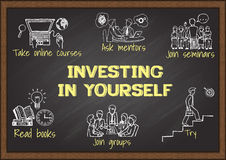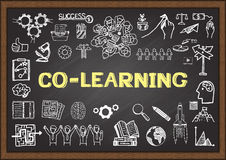

This past year may have been a turning point year for L&D, as several trends appeared to be catching on to substantially change attitudes and approaches to our work.
At SyNet, we have been reflecting on 2015 and among our observations, we detect a more progressive and forward-thinking view of L&D taking shape. To further inform our sense of change, we had a chance to sit down and discuss the pulse of L&D with Roland Deiser, founder and Chairman of the Executive Corporate Learning Forum (ECLF), a community of L&D leaders that includes over 70 major global organizations, and founder of the Center for the Future of Organization at the Drucker School of Management at Claremont Graduate University.
Q: What do you see as the leading trend in L&D?
A: Let me say first of all that L&D is recognizing that it has to rethink itself. Paradoxically, the function responsible for capability development has to start to understand that mastering the challenges of the 21st century organization requires not just new capabilities but a new approach to capability development itself. This means that L&D needs to redefine itself and its logic to respond to the new business logic of a fast-paced, disruptive world. Helping organizations become more agile, flexible, customer-centric, and responsive cannot be done using just the old models of bringing in business school professors for classroom training.
Q; What is involved in the new model of L&D then?
A: The first shift, which we see already starting to happen in many organizations, is realizing that the key driver of a learning culture is not the L&D department but the self-driven learner. L&D needs to switch from a push-strategy to a pull-strategy where it creates a context that maximizes opportunities for people and teams to learn for themselves wherever and whenever needs emerge, rather than offering just a set of fixed courses offered at fixed times. It means creating an environment where people enjoy and are eager to learn for themselves.
Q: How does L&D accomplish the shift to self-driven learning?
A: It’s really a major paradigm shift which is hard, as any paradigm shift is. The good news is that in many organizations, people who are self-driven learners are already there, especially the Millennial generation. They see themselves as each being a “brand,” and they view their learning as helping establish their brand – the expertise they are known for and the reputation they carry in the organization. They are interested in expanding their capabilities horizontally, not just vertically. They want learnings to be available on their own schedule and at their fingertips.
Q: What can L&D do to support the shift?
A: L&D must foster something which I call learnership, by which I mean a combination of attitudes, practices and culture where each person takes responsibility for their own learning as well as the learning of their relevant environment, and there are well-designed systems to support that. One element of this is to facilitate the ability of people to create their own self-organized network of learning resources – may it be content or people – so they are able to find and choose what they want and need at the time they need it. The new digital models of content generation and distribution are a big game changer here. There is so much high-quality content out there – millions of YouTube videos, channels like the TED library, or MOOCs that allow encounters with inspiring speakers. There are thousands of discussion boards, blogs, and many other sources of information that in their aggregate constitute an unprecedented basket of offerings. In addition, via enterprise social networks, many internal experts and stakeholders are also creating their own content to share with colleagues, which creates a new ecosystem of organizational learning. It is not easy to navigate this complex universe effectively in a way that benefits not only the individual but is also aligned with the strategic and organizational challenges organizations face.
Q: So L&D needs to become a sort of curator of learning?
A: Absolutely. Curating becomes a key function of L&D, which means linking the design of self-editing learning spaces – where people are responsible for their own development – with the company’s business priorities in a way that helps both people and organizations stay cutting edge and agile. L&D must learn to act as a sort of broker, connecting and introducing people who can help each other and thereby building a community of learners to jointly tackle the big strategic themes and topics an organization faces. The way to do this is for L&D to support the formation of peer-to-peer networks, discussion boards, chatrooms, and so on, where people can connect and share knowledge with others, support each other in their learning endeavors, and where they can create shared meaning and understanding of what is critical for competitive success.
Q: Doesn’t this shift involve a different level of trust in people than organizations have had in the past?
A: Yes, trust becomes a key issue in this context. Trust from the senior echelons of a company in their employees’ ability and motivation to learn. And trust among peers so they have the courage and the willingness to share. Learnership also means that people care about each other and help each other grow, sending articles to each other, introducing them to people who can mentor them, and so on. The good news is that today we have social technologies that embrace and foster a culture of learnership, so it will hopefully soon be the new normal, especially among millennials.
Q: So does this mean that courses, training classes, and the old types of learning should be abandoned?
A: I am not suggesting that we should throw the baby out with the bathwater. As David Bromwich writes in his excellent New York Review of Books article Trapped in the Virtual Classroom: “With MOOCs we lose out on the art of give-and-take that we learn in the physical presence of human beings.” Give and take is the essence of learning, and we need the well-designed spaces of face-to-face encounters to foster real conversations. We also need these spaces to help people develop the skill of give-and-take – and, even more important, the sense of caring for each other and for the purpose of the organization that eventually puts give-and-take into a meaningful context and creates mutual accountability for a joint ongoing journey of learning and development.
